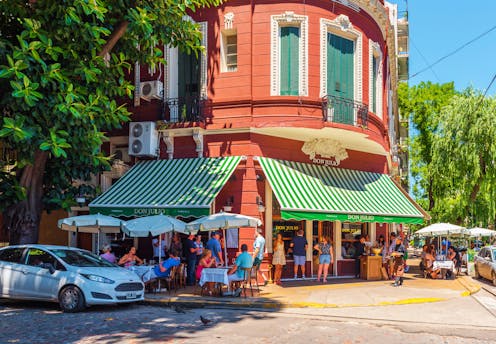
“Was the steak and wine as good as I’ve heard?” Undeniably the most common question I’m asked when I return from Argentina. And while my answer is – obviously – yes, the question is asked with good reason. The association with beef and steakhouses (parrillas in Spanish) and world-class malbecs from Mendoza are synonymous with South America’s second-largest country.
The Argentine cattle ranches and their famous gauchos not only produce the abundance of beef that has been consumed domestically and exported worldwide since the 1800s, they are now a significant driver of tourism to the countryside.
And in the cities, people queue around the block to secure a table at the best steakhouses – such as Don Julio’s in Beunos Aires.
But this enthusiasm for beef is no longer replicated throughout the rest of the country because of one major barrier – cost.
A recent report predicted that beef consumption in 2024 will be the lowest since records began in 1914, with a projection of 44.8kg per head for this year’s consumption against an average of nearly 73kg. The first quarter of 2024 has seen the sharpest drop in beef consumption in 30 years, down 18.5% in March on the same period in 2023.
The fall in the value of salaries and rampant inflation are being blamed, but, more concretely, actions to address the latter are exacerbating the former due to the economic policies of president Javier Milei.
Elected in November 2023 with the biggest vote share of any Argentine president since the return to democracy in 1983, his anti-establishment and anti-statism rhetoric arguing that deep austerity (illustrated by his frequent appearances with a chainsaw to decimate the state) was the only way to fix the economic and social challenges that had plagued Argentina since the early 2010s.
This anti-establishment platform was a major part of his appeal and was embraced by an electorate weary of the political status quo.
At the time of Milei’s election, poverty levels had reached 40% and the central bank had no foreign currency reserves to pay a US$913 million (£704 million) loan repayment as part of the next tranche of payments to the International Monetary Fund (IMF)’s US$44 billion loan agreement.
All this was compounded by a drought that was entering its third year, and which had damaged Argentina’s major agricultural exports.
To keep up with the provision of energy and transport subsidies that had been a hallmark of the previous administration, the government had pursued a policy of printing more money. This meant that the economic backdrop to the president’s inauguration in December 2023 was a rise in annual inflation to 210% (with December’s monthly figures alone showing increases of 25.5%).
Devaluing the peso
On two visits to Buenos Aires in 2023, I witnessed how rampant inflationary pressures were affecting people’s lives. The same taxi journey to the airport jumped by 55% from 5,800 pesos (£4.84) in March to 9,000 pesos in July. While from my privileged position with access to foreign currency, this was not a problem, the challenge for people paid in pesos in Argentina is phenomenal.
Part of Milei’s shock therapy to address this has been to devalue the peso by 50% from roughly 400 to 800 pesos to the US dollar to try to close the gap between the official and black-market exchange rates – the dollar blue. Foreign currency controls to try to strengthen the peso created a thriving black (or blue) market in US dollars, with unofficial buying and selling creating a parallel exchange rate in Argentina.
This was coupled with a policy known colloquially as “the blender”, essentially raising spending by less than inflation and thus delivering real-term cuts in spending. This approach has been especially damaging in pensions, which dropped by 40% year on year.
Wages also suffered real-terms cuts, with public sector pay losing 21.3% of its purchasing power and minimum wages depreciating by 28.8% between November 2023 and May 2024.
These austerity measures have pushed Argentina into a deep recession, but have cooled the level of inflation (4.6% in June 2024). And since April 2024, the measures have helped the government collect more in tax receipts than it spends and post fiscal surpluses. This has been much vaunted by financial markets and the IMF.
But at what cost? The removal of energy subsidies has contributed to an 80% rise in the cost of living. Figures from the Universidad Católica Argentina show poverty reached 57% by February 2024 and homelessness in May in Buenos Aires alone is up 14% year on year. Humanitarian organisation Unicef has warned child poverty is on track to reach 70%.
The programme of austerity has also led to mass mobilisations and general strikes in protest.
So, the drop in beef consumption hardly seems surprising. But there is a danger here for Milei because while the world associates Argentina with its excellent beef and parrillas, it is much more symbolic for Argentinians. Beef is one of the commodities that comprise the country’s basic consumption basket, the list of staple products and their affordability used to frame poverty indices.
So while there are still queues outside premier steakhouses in Argentina, it is the growing lines outside the country’s thousands of soup kitchens that may come to define Milei’s legacy.
Matt Barlow does not work for, consult, own shares in or receive funding from any company or organisation that would benefit from this article, and has disclosed no relevant affiliations beyond their academic appointment.
This article was originally published on The Conversation. Read the original article.







